Embarking on an archaeological dig vacation offers a unique blend of adventure, education, and hands-on experience in uncovering the mysteries of the past. This uncovers the world of archaeological vacations, where travelers participate in real excavations under the guidance of professional archaeologists. From the ancient ruins of the Mediterranean to the lost cities of the Americas, these vacations provide an unparalleled opportunity to contribute to valuable research while experiencing the thrill of discovery firsthand.
1. Hadrian’s Wall, United Kingdom

Image Credit: Shutterstock / elaine501
Participating in an excavation along Hadrian’s Wall explores Roman Britain. Stretching across the north of England, this UNESCO World Heritage site was a Roman frontier built in AD 122. Volunteers can join digs that explore Roman forts, settlements, and the wall itself, uncovering artifacts and structures that reveal the daily lives of Roman soldiers and local inhabitants. The experience is enriched by workshops, lectures, and guided tours, providing a comprehensive understanding of Roman military architecture and frontier life.
Insider’s Tip: Choose a dig that offers accommodation in historic settings or local homes to enhance your cultural immersion. Engaging with local experts and attending evening lectures can significantly enrich your experience.
When to Travel: The best time for archaeological digs in the UK is during the summer months, from June to August, when the weather is most favorable for outdoor work.
How to Get There: Hadrian’s Wall is accessible from major UK cities like Newcastle and Carlisle, with train and bus services providing connections to various points along the wall.
2. Pompeii, Italy
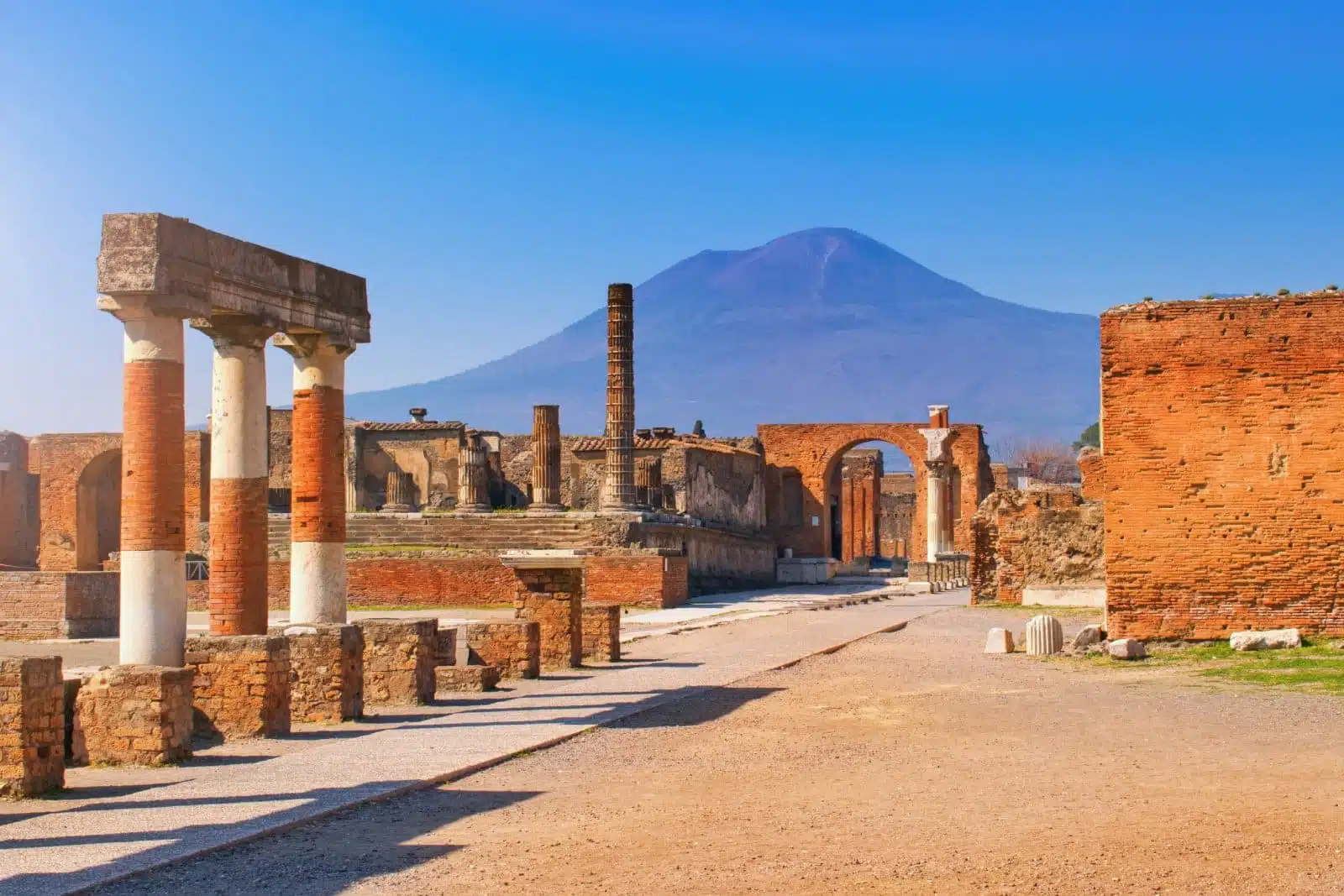
Image Credit: Shutterstock / Tunatura
Pompeii offers a unique window into ancient Roman life, frozen in time by the eruption of Mount Vesuvius in AD 79. Volunteers can work alongside archaeologists to excavate homes, streets, and public buildings, uncover frescoes, mosaics, and everyday objects that tell the story of the city’s final moments. This immersive experience contributes to preserving one of the world’s most important archaeological sites and offers insights into Roman urbanism, art, and society.
Insider’s Tip: Be prepared for hot and dusty conditions by wearing appropriate clothing and bringing plenty of water. Participating in after-hours tours and lectures can greatly enhance your understanding of the site.
When to Travel: Spring (April to June) and fall (September to November) offer milder weather, making these seasons ideal for excavation work.
How to Get There: Pompeii is easily accessible from Naples, with regular train services connecting to the Pompeii archaeological site.
3. Göbekli Tepe, Turkey
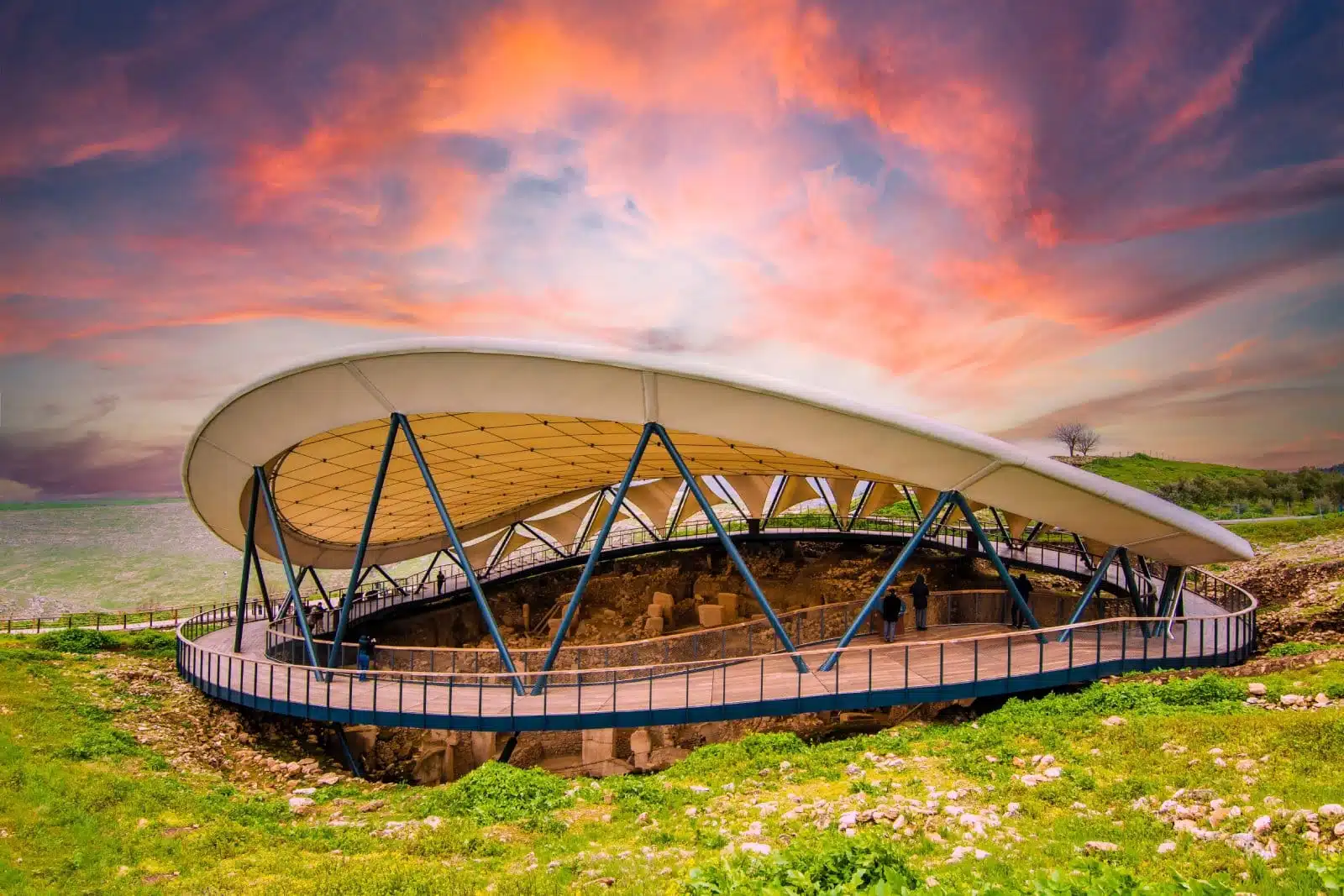
Image Credit: Shutterstock / Nejdet Duzen
Often hailed as the world’s oldest temple, Göbekli Tepe dates back to the 10th millennium BC. Volunteers at this site have the opportunity to uncover massive stone pillars and carvings that predate Stonehenge and the pyramids of Egypt. The work contributes to understanding the early Neolithic revolution and the origins of complex societies. Seminars on Near Eastern prehistory and visits to nearby archaeological sites complement the excavation experience.
Insider’s Tip: Due to the site’s significance and the delicate nature of the excavations, volunteers should have a keen interest in archaeology and be prepared for precise and careful work.
When to Travel: The excavation season typically runs from late spring to early fall, avoiding the extreme heat of mid-summer.
How to Get There: Göbekli Tepe is near the city of Şanlıurfa in southeastern Turkey, accessible by domestic flights from Istanbul to Şanlıurfa Airport, followed by a short drive.
4. Machu Picchu, Peru

Image Credit: Shutterstock / Anton_Ivanov
While direct participation in excavations at Machu Picchu is highly restricted, several archaeological projects in the surrounding region offer volunteers the chance to explore Inca culture and its predecessors. These digs focus on Inca trails, settlements, and agricultural sites, providing insights into the engineering marvels and societal structures of the Inca Empire. Volunteers learn archaeological techniques and contribute to preserving this UNESCO World Heritage site.
Insider’s Tip: Opt for programs that include hikes along the Inca Trail and guided tours of Machu Picchu to complement your archaeological work with a broader understanding of Inca heritage.
When to Travel: The dry season from May to September is the best time for archaeological work and hiking in the region.
How to Get There: Cusco is the gateway to Machu Picchu and surrounding archaeological sites, with international connections through Lima.
5. Petra, Jordan
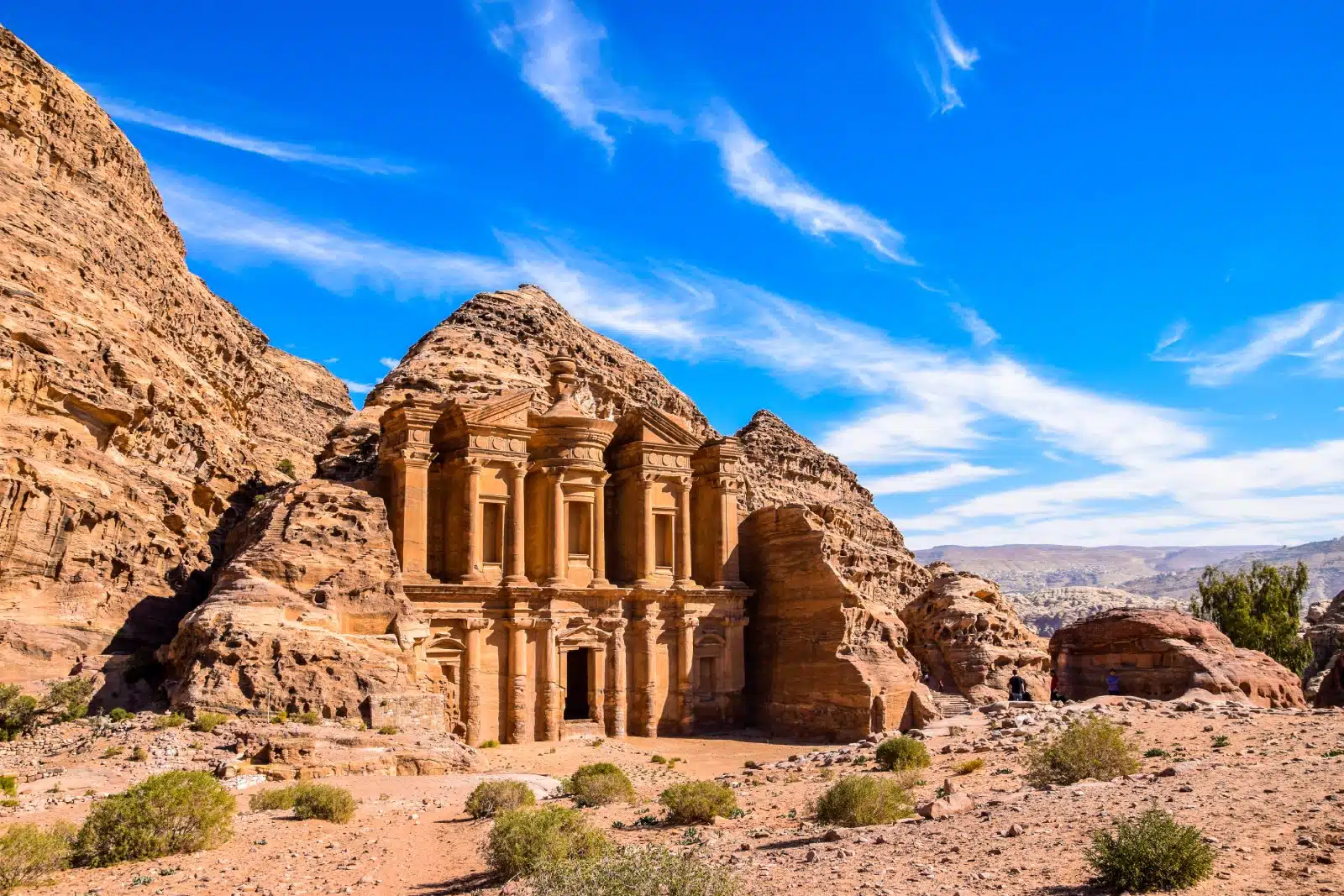
Image Credit: Shutterstock / tenkl
Petra, the ancient Nabatean city carved into the rose-red cliffs of southern Jordan, offers a unique opportunity for archaeological enthusiasts. While direct excavation opportunities for tourists are limited due to the site’s UNESCO World Heritage status, several projects in the surrounding area allow volunteers to explore Nabatean, Roman, and Byzantine remains. Participants can expect to learn about archaeological surveying, pottery classification, and even ancient construction techniques, all while contributing to the preservation and understanding of this ancient civilization.
Insider’s Tip: Engage with local Bedouin guides to enhance your understanding of Petra and its surroundings. Their knowledge and stories add invaluable context to the archaeological work.
When to Travel: Spring (March to May) and autumn (September to November) offer the most comfortable climate for fieldwork in Petra.
How to Get There: Petra is accessible from Jordan’s capital, Amman. Regular bus services and tours operate to Petra, or you can rent a car for more flexibility.
6. The Valley of the Kings, Egypt
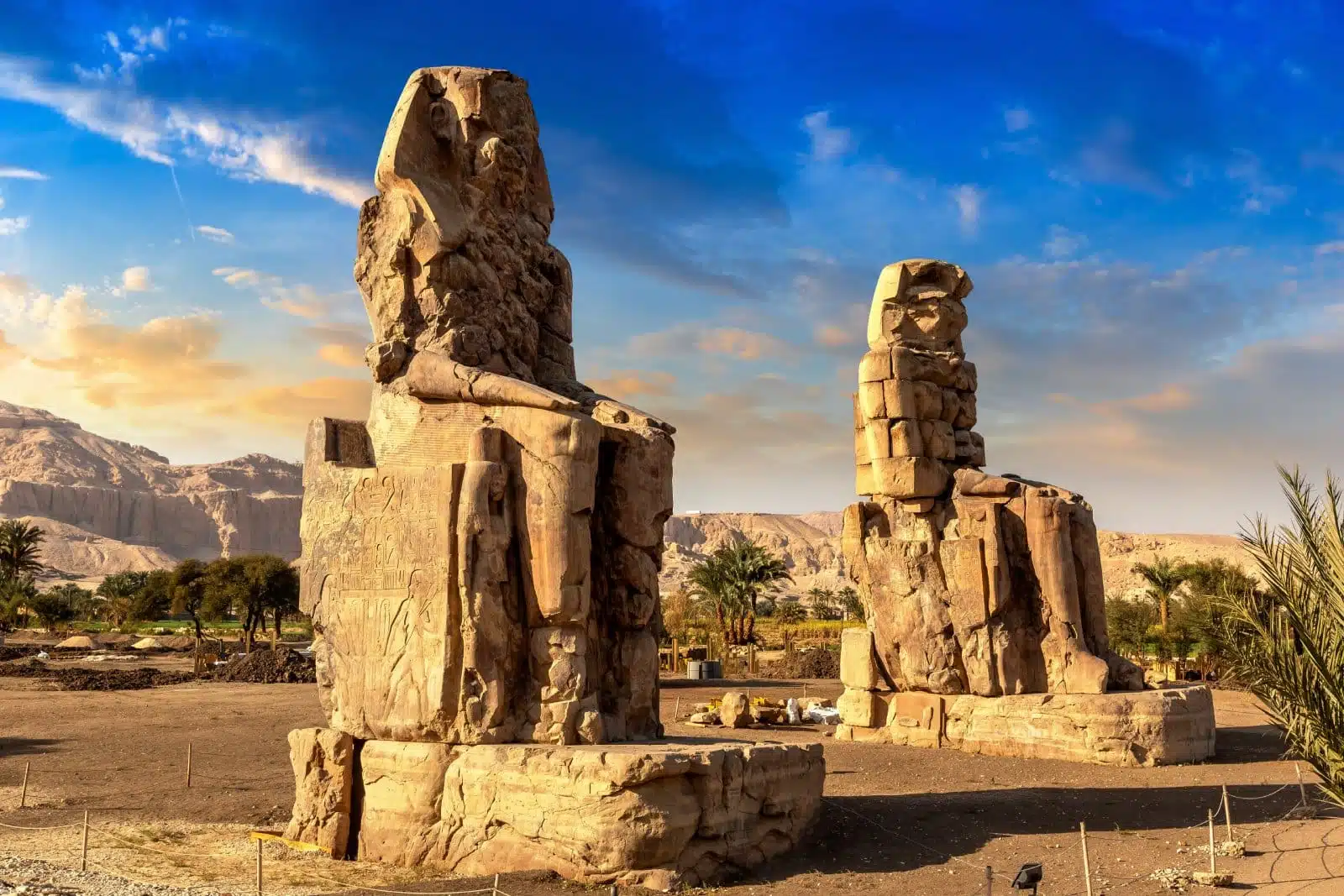
Image Credit: Shutterstock / Sergii Figurnyi
The Valley of the Kings, Egypt’s ancient royal burial ground, is a site of ongoing archaeological interest. While digging in the valley itself is restricted to professional archaeologists, several initiatives allow volunteers to participate in excavations in nearby areas, contributing to understanding Ancient Egyptian life and mortuary practices. This experience offers a deep dive into Egyptology with hands-on work, lectures, and guided tours of the valley’s most famous tombs.
Insider’s Tip: Due to the delicate nature of the work and the extreme climate, be prepared for early starts to avoid the midday heat and ensure you’re equipped with suitable protective clothing.
When to Travel: The cooler months from October to April are the best time for archaeological work in Egypt.
How to Get There: Luxor is the gateway to the Valley of the Kings, with international flights to Luxor International Airport.
7. Teotihuacan, Mexico

Image Credit: Shutterstock / Alexandra Lande
Just outside of Mexico City lies Teotihuacan, an ancient city known for its massive pyramids and complex urban layout. Archaeological projects here allow volunteers to explore the city’s residential compounds, temples, and workshops. Participants learn excavation techniques, artifact processing, and get an in-depth look at the daily life of one of Mesoamerica’s most influential cultures.
Insider’s Tip: Take the opportunity to explore the Pyramid of the Sun and the Pyramid of the Moon during your free time. Climbing these structures offers a breathtaking perspective on the city’s layout.
When to Travel: The dry season, from November to April, provides the most comfortable conditions for excavation work.
How to Get There: Teotihuacan is easily accessible from Mexico City by bus, taxi, or tour group, making it a convenient day trip for those staying in the capital.
8. Catalhoyuk, Turkey
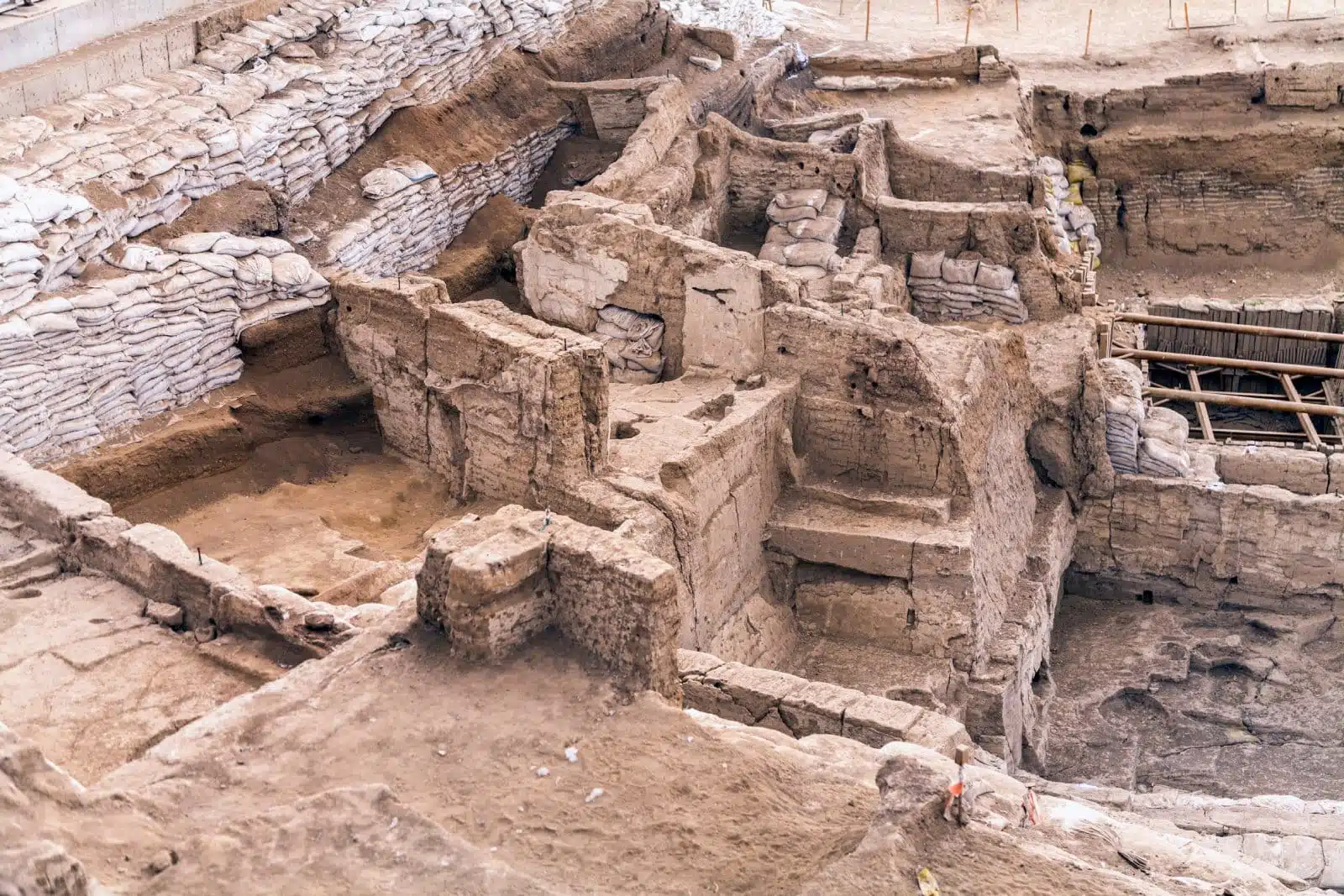
Image Credit: Shutterstock / acsen
Catalhoyuk, one of the world’s oldest towns, offers a unique glimpse into Neolithic life. Volunteers at this site can participate in excavations that uncover the town’s buildings, art, and everyday objects. This hands-on experience is complemented by workshops on ancient technologies and the social organization of one of humanity’s earliest settlements.
Insider’s Tip: Be prepared for meticulous work, as the site’s ancient layers require careful excavation to preserve the integrity of the findings.
When to Travel: The excavation season typically runs from June to August, aligning with the region’s dry and warm climate.
How to Get There: Catalhoyuk is located in the Konya Province of Turkey. The nearest major city, Konya, is accessible by train or bus from Istanbul and Ankara, with local transport options available to the site.
9. Jamestown, Virginia, USA
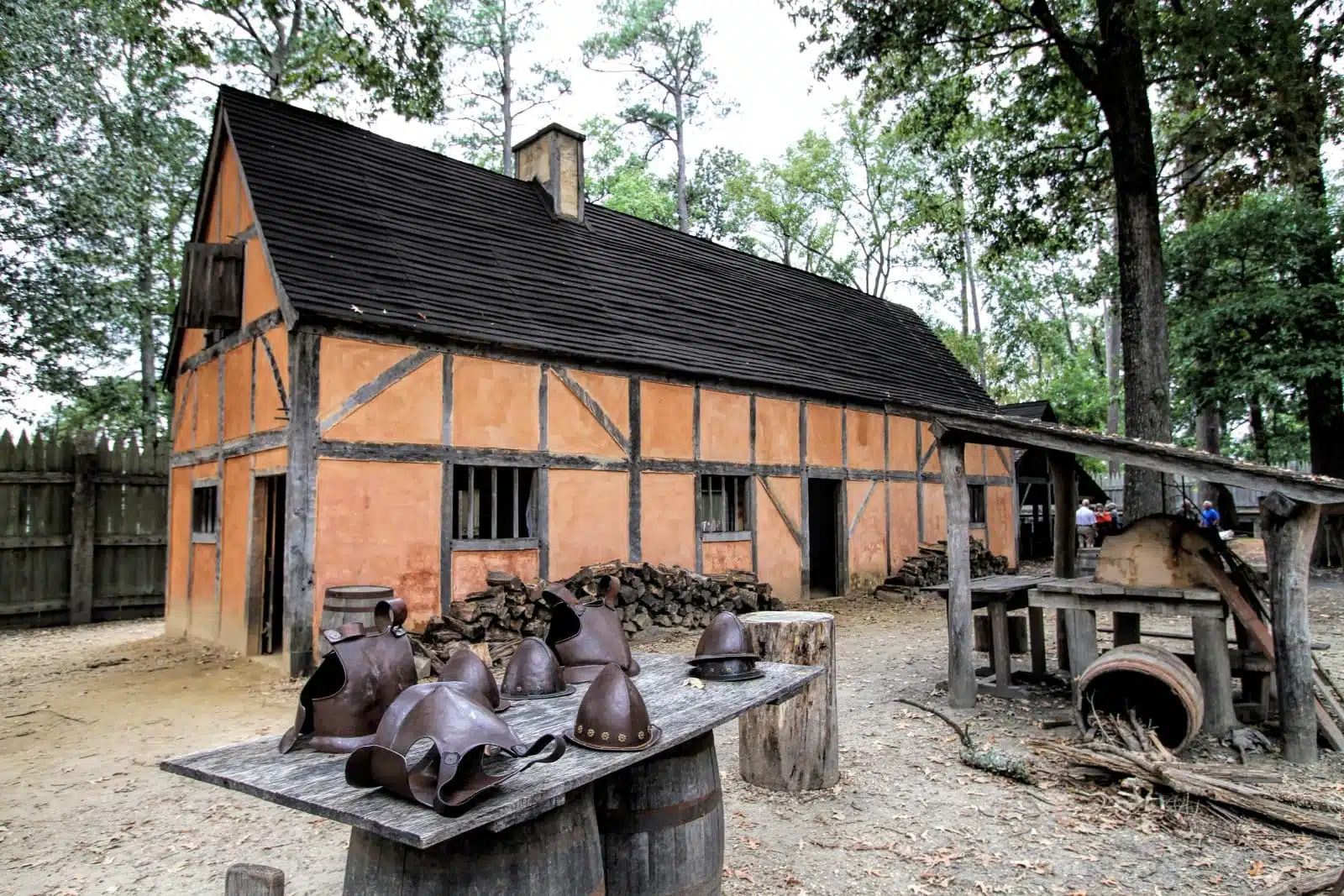
Image Credit: Shutterstock / Kathy Clark
Jamestown, the first permanent English settlement in the Americas, is an active archaeological site that offers volunteer opportunities. Participants can help uncover artifacts from the early settlers and learn about their challenges. This experience provides insight into colonial American history and the interactions between the English settlers and Native American tribes.
Insider’s Tip: Take advantage of the educational programs offered at the site, including lectures and interactive demonstrations, to gain a fuller understanding of 17th-century life in Jamestown.
When to Travel: Spring and fall offer Virginia’s most pleasant weather for outdoor archaeological work.
How to Get There: Jamestown is located near Williamsburg, Virginia, and is easily accessible by car from Richmond International Airport.
10. Angkor Wat, Cambodia

Image Credit: Shutterstock / Mirco Gabriel
While direct participation in excavations at Angkor Wat is restricted, surrounding areas in the Angkor Archaeological Park often host digs focusing on the Khmer Empire. Volunteers can contribute to uncovering residential areas, water management systems, and smaller temples, offering insights into the daily life and engineering prowess of the Khmer civilization. This experience is enriched by the stunning backdrop of one of the world’s most magnificent temple complexes.
Insider’s Tip: Respect the cultural and spiritual significance of the site by dressing modestly and behaving appropriately during your visit.
When to Travel: The dry season from November to February offers cooler temperatures ideal for excavation work.
How to Get There: Siem Reap is the gateway to Angkor Wat, with international flights to Siem Reap International Airport.
The Bottom Line

Image Credit: Shutterstock / Perfect Lazybones
Participating in an archaeological dig vacation is an extraordinary way to connect with the past, contribute to ongoing research, and gain a deeper appreciation for the complexities of human history. Whether uncovering ancient artifacts in the deserts of Egypt, exploring Neolithic towns in Turkey, or delving into the colonial history of the Americas, each dig offers a unique window into the lives of those who came before us. As you embark on this journey, remember that the true treasure lies not in the artifacts you uncover but in the knowledge gained and the connections made.
More From The Green Voyage
12 Best Practices for Sustainable Travel in 2024 – How to Travel With Minimal Environmental Impact
Unlocking Hotel Perks – A Traveler’s Guide to Maximizing Hotel Reward Programs for Optimal Benefits
Travel Hacks for Frequent Flyers – 6 Tips and Tricks to Make the Best of Air Travel
The post Archaeological Dig Vacations 2024 – Participate in 10 Real Excavations first appeared on The Green Voyage.
Featured Image Credit: Shutterstock / Bork.
For transparency, this content was partly developed with AI assistance and carefully curated by an experienced editor to be informative and ensure accuracy.
Tips for Trip Success
Book Your Flight
Find an inexpensive flight by using Kayak, a favorite of ours because it regularly returns less expensive flight options from a variety of airlines.
Book Your Hotel or Special Accommodation
We are big fans of Booking.com. We like their review system and photos. If we want to see more reviews and additional booking options, we go to Expedia.
You Need Travel Insurance!
Good travel insurance means having total peace of mind. Travel insurance protects you when your medical insurance often will not and better than what you get from your credit card. It will provide comprehensive coverage should you need medical treatment or return to the United States, compensation for trip interruption, baggage loss, and other situations.Find the Perfect Insurance Plan for Your Trip
